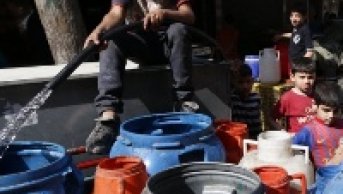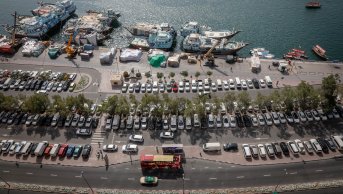Iran Faces Drinking Water Shortage
Iran has been going through a severe crisis in sectoral use of water (drinking, irrigation, industrial) for a long period of time. The main causes of which are drought (the worst in 60 years); population growth; rural-urban migration; urbanization; rising urbanization; and mismanagement of water resources. According to the Global Trends 2030 Report, Iran will have been heavily dependent on fossil and imported water by 2030.
FAO indicates that in Iran, which is located in one of the most arid and semi arid regions of the world, the average annual precipitation is 252 mm, which is equal to approximately one-third of the world average. However, due to the climate change, the aforesaid value has decreased by 10 percent. In addition to , population growth and rural depopulation also affect overexploitation of water resources. Whilst the structure of population in pre-revolutionary Iran was that 40 percent of people lived in urban, and 60 percent in rural zones. The trend was reversed in the post-revolutionary Iran. Besides, the overpopulated regions are different from the water-rich regions in the country. For instance, while the population is dense in the Central Province of Iran, the water resources are mainly located in western Iran where the basin of the Persian Gulf and the Amman Sea are situated. Iran strived to solve the water shortage prevailing in overpopulated regions through inter-basin water transfer, which was considered a reasonable solution at that time. However, Iran which had been transferring inter-basin water resources for some 30 years did not take into consideration the current water shortage that prevails in donor – receiving basins. Today, Iran which has been trying to find a solution to the water shortage through inter-basin water transfer method, is facing water issues in its provinces.
In Iran, 92 percent of the water resources is used for irrigation, and conventional irrigation methods employed in some 80 percent of agricultural lands in the country cause a great deal of water loss. The amount of water loss in agricultural field of Iran is at the rate of 70 percent. This appears as a problem aggravating the current water shortage.
President Hassan Rouhani in his address at the Climate Summit held in New York in September 24th, 2014 voiced the global concern on climate change and underlined the importance of acting in unison to fight against this global problem. As much as the negative impact of climate change on water shortage cannot be denied; it is obvious that also mismanagement and utilization of water resources constitute great problems in the country. Recently, the daily per capita use of water in Iran, where people have been going through water shortages in metropolitan cities such as Tehran and Isfahan, consumption of water is more than 350 liters per capita per day When compared to other countries in the world; the average daily per-capita water use in the EU countries is 250 liters; while it is some 450 liters in the US. In Iran, which is located in a water-scarce region, public awareness is essential to conserve water and and for better utilization of water resources. The Tor dam reservoir which provides Tehran (using 25 percent of Iran's drinking water) with water resources has dried out.
President Rouhani addressed the aforesaid issue both before and after being elected as the President of Iran. Also, he suggested in October 2013 after becoming the President that a new approach regarding the management of water resources must be adopted; and emphasized that national will is essential to solve the water problem. Despite the idea that a new approach is to be adopted regarding the management of water resources, Iran has currently been trying to overcome the aforesaid problem through temporary solutions. Carrying on inter-basin water transfer, Iran is striving to find a solution to the water shortage in the Central Province through desalination of the Caspian sea water and it is planning a project envisaging water transfer from Tajikistan. The aforementioned methods aim to solve periodical problems and put off a major problem. Developing long-term projects is essential for sustainable and effective management of water resources.
Being an efficient method in respect to effective water use at a rate of 90 percent, modern irrigation techniques must be employed in the agricultural sector, which uses more water than any other sector, as soon as possible. New regulations regarding the pricing, and water awareness projects should be introduced for effective use of water. International organizations have been developing projects to overcome water shortage in Iran who ranks as the 24th most water-stressed nation in the world. Most recently, FAO has come up with a project for Iran. With the implementation of the plan aiming at restoring water resources in Iran, it is envisaged that water resources will improve in short term.




